I have been working on a SEPIC converter for an electronic cigarette power supply. This application involves using two 3.7v INR batteries in parallel, rated for an appropriately high current discharge, to power the converter and drive a kanthal heating element with a DC resistance ranging from about 0.5 ohms to 2 ohms.
I am driving the SEPIC MOSFET with the PWM output of an atmega328p at ~5.0v, through a 100 ohm limiting resistor and with a 10K pulldown to ground. The SEPIC portion of the circuit is as follows:

The only difference being that my MOSFET is an STL260N3LLH6 and my diode is MBR2045EMFST1G - my LTSpice library doesn't have entries for the parts I am actually using. The inductors are not coupled, and are rated for 48A current saturation. All capacitors are ceramics.
At low duty cycles I am getting the expected behavior, although sometimes depending on inductor value and coupling capacitor value the output voltage is about 10% higher than it should be for a particular duty cycle.
Once I get to a duty cycle of about 55-60%, the voltage output no longer continues to increase and at about 65% the MOSFET gets extremely hot and will burn up if operated for too long.
Initially I thought I was not driving the MOSFET gate hard enough, as I tried to operate my MCU at 3.3v, but operating the MCU and MOSFET at 5.0v has not fixed the problem. Inductor values from 1.5uH to 6.5uH have been swapped in with minimal changes to behavior as well. I have tried coupling capacitors from 1uF all the way to 90uF, still no luck. Switching frequencies from 400Hz to 128kHz have also been tried.
Can anyone point me in the right direction as to why my MOSFET is burning up? For curiosity's sake, I built up a buck-boost converter using the same parts and got a similar result.